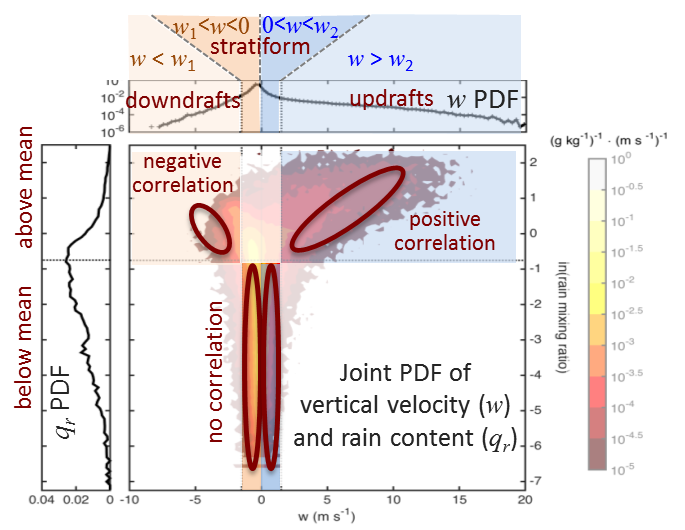New algorithm will help improve convection representation in global models
Submitter:
Wong, May — National Center for Atmospheric Research (NCAR)
Ovchinnikov, Mikhail — Pacific Northwest National Laboratory
Area of research:
General Circulation and Single Column Models/Parameterizations
Journal Reference:
Science
Vertical motions in the atmosphere are the primary drivers for cloud and precipitation formation, and they play an important role in redistributing condensed water in the vertical column. This vertical transport is difficult to represent in climate models because it happens primarily at scales smaller than a typical model grid size. To lessen the problem, a pair of researchers developed a new algorithm for computing the vertical fluxes of hydrometeors (e.g., rain, graupel, snow, ice) based on statistical relationships between cloud and precipitation properties and vertical motions.
Impact
Vertical transport of hydrometeors from the new representation closely matches the benchmark, high-resolution simulation. The new modeling approach will contribute to improving convection representation in global models.
Summary
Researchers developed a new formulation to represent the vertical transport of hydrometeors in global models and validated it with benchmark, high-resolution numerical simulations of continental and tropical convection. Scientists developed this formulation by using probability density functions (PDFs) to treat subgrid-scale variability in coarse-resolution models. The new hydrometeor transport representation conditionally samples PDFs of vertical velocity and condensate amounts, and then scales the distributions to account for different correlations in regions of strong and weak vertical motions. The represented transport fluxes—tested for four episodes of deep convection—agreed well with benchmark fluxes computed directly from the cloud-resolving model output. The results demonstrated the potential use of the subgrid-scale hydrometeor transport formulation in an assumed PDF to represent the co-variances of vertical velocity and hydrometeor mixing ratios.


